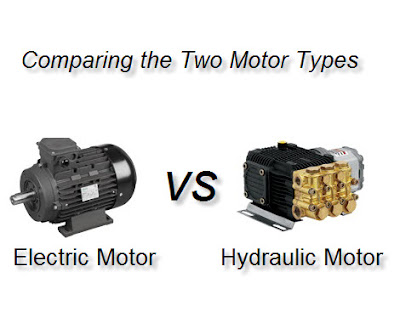High pressure applications include machine tool coolant blasting, car washing, sand blasting, and tank cleaning. These applications require a certain type of positive displacement pump, which can provide the required pressure levels. For such applications, the best choice is a triplex pump.
What is a Triplex Pump?
These pumps consist of reciprocating designs. Unlike a normal displacement pump that uses a single piston, this pump comprises three pistons to pump the fluid. Thus, it provides triple the power, hence its name. Triplex pumps are designed for application where the maximum working pressure 1000 PSI.
Triplex Pump Construction
The construction of the pump is similar to a three cylinder engine with three pistons or plunger. Each cylinder consists of a single plunger. The cylinders move up and down in strokes. The pistons suck in the fluid on the downwards stroke, create the pressure, and discharge the fluid on the upstroke.
The pistons are driven by a prime mover; which is an electric motor most of the time. However diesel and hydraulic engines can also be used as the prime movers. A camshaft is used to create the reciprocating motions of the pistons. The prime move powers the camshaft, which causes the pistons to move in a specific order. Each piston is designed to discharge the fluid at every 120 degrees rotation.
Pump volume and pressure is directly proportional to the RPM of the prime mover. Hence, an increase in the prime mover’s RPM will cause an increase in the pump’s output volume and pressure.
Advantages of Triplex Pumps
The design and construction of triplex pumps make them a much better option than simplex or single piston pumps:
• The continual discharge provided by the three pistons provides a smoother flow than the intermittent discharge of a simplex pump.
• The average flow is higher than a single piston pump.
Besides the applications mentioned in the introduction, the usage of triplex pumps can also be extended to water jet cutting, mud pumping, and oil and gas drilling.
What is a Triplex Pump?
These pumps consist of reciprocating designs. Unlike a normal displacement pump that uses a single piston, this pump comprises three pistons to pump the fluid. Thus, it provides triple the power, hence its name. Triplex pumps are designed for application where the maximum working pressure 1000 PSI.
Triplex Pump Construction
The construction of the pump is similar to a three cylinder engine with three pistons or plunger. Each cylinder consists of a single plunger. The cylinders move up and down in strokes. The pistons suck in the fluid on the downwards stroke, create the pressure, and discharge the fluid on the upstroke.
The pistons are driven by a prime mover; which is an electric motor most of the time. However diesel and hydraulic engines can also be used as the prime movers. A camshaft is used to create the reciprocating motions of the pistons. The prime move powers the camshaft, which causes the pistons to move in a specific order. Each piston is designed to discharge the fluid at every 120 degrees rotation.
Pump volume and pressure is directly proportional to the RPM of the prime mover. Hence, an increase in the prime mover’s RPM will cause an increase in the pump’s output volume and pressure.
Advantages of Triplex Pumps
The design and construction of triplex pumps make them a much better option than simplex or single piston pumps:
• The continual discharge provided by the three pistons provides a smoother flow than the intermittent discharge of a simplex pump.
• The average flow is higher than a single piston pump.
Besides the applications mentioned in the introduction, the usage of triplex pumps can also be extended to water jet cutting, mud pumping, and oil and gas drilling.


